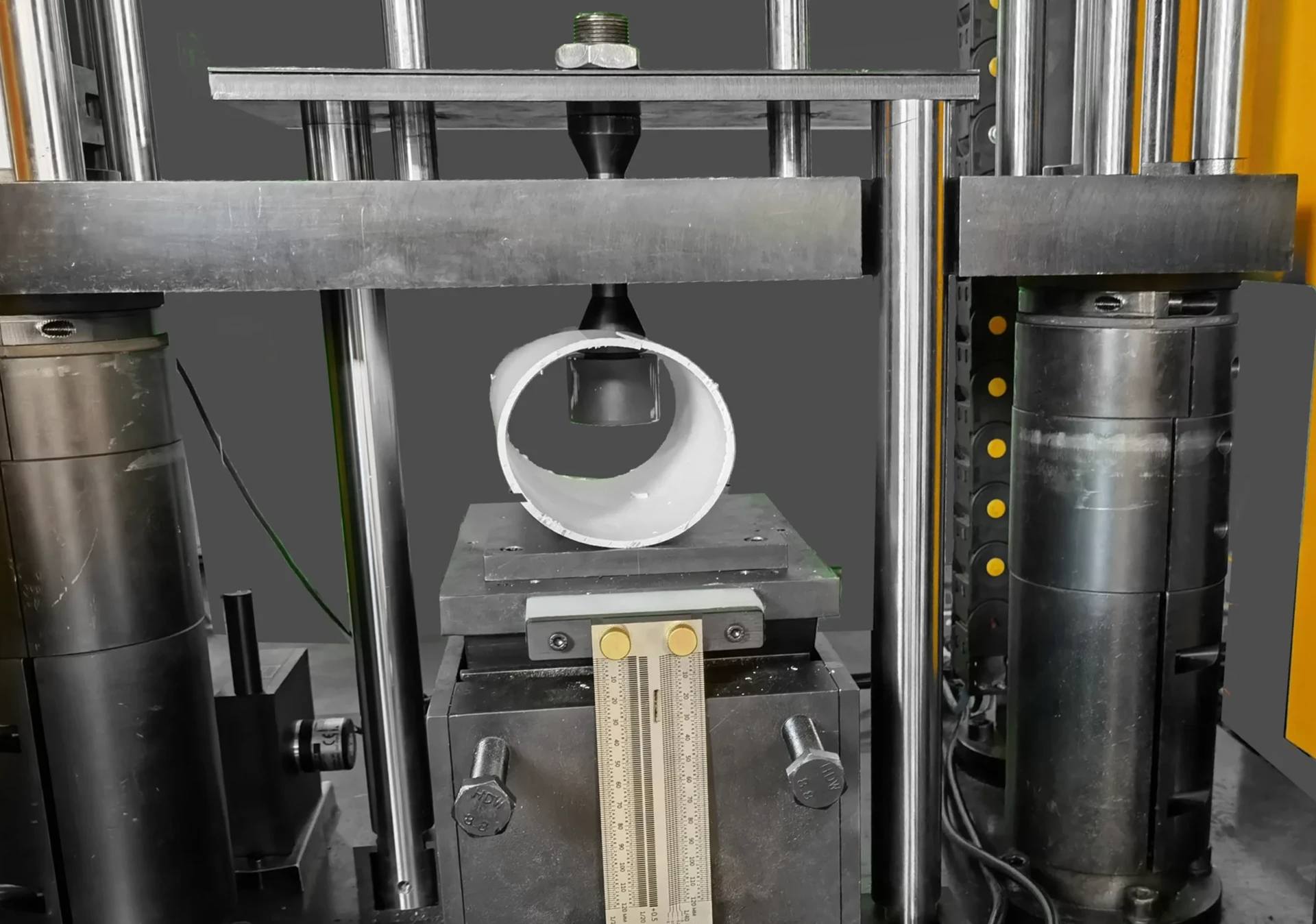ASTM D5276-20 Combined Edge and Flat Drop Test
The ASTM D5276-20 Combined Edge and Flat Drop Test is a critical procedure used to evaluate the resistance of packaging materials to mechanical impact. This test method involves dropping a specimen from a specified height onto two different surfaces—flat and edge—to assess its ability to withstand impact forces without compromising integrity or causing damage to contents.
This testing is essential for ensuring that packaging can safely protect products during transportation, handling, and storage. Compliance with this standard ensures that the packaging meets regulatory requirements while also demonstrating robust performance under real-world conditions.
The test setup includes a free-fall apparatus where specimens are dropped from a specified height onto both flat and edge surfaces. The apparatus typically comprises a rigid frame supporting a weight or pendulum, which is released to fall vertically. The impact surface consists of two distinct areas: one for the flat drop and another for the edge drop.
The specimen must be prepared according to ASTM D5276 specifications, ensuring that it accurately represents the material being tested. Specimen preparation involves cutting the packaging into standard sizes or shapes as defined by the test protocol. Once prepared, specimens are placed on the specified impact surface and subjected to a free fall from a predetermined height.
The testing procedure requires careful calibration of the drop height and recording of any observed damage. Damage can include cracks, tears, or deformations that affect the integrity of the packaging. The test is typically repeated multiple times with different specimens to ensure consistent results across samples.
ASTM D5276-20 provides clear guidelines on how to conduct this test accurately and consistently. It specifies the type of materials suitable for testing, the dimensions of the specimen, and the precise method of impact application. The standard also outlines acceptable levels of damage or deformation that would indicate failure.
The results from ASTM D5276-20 are crucial for quality managers, compliance officers, R&D engineers, and procurement teams who need to ensure that packaging meets both regulatory standards and internal quality specifications. By complying with this test method, manufacturers can demonstrate their commitment to product safety and customer satisfaction.
Understanding the nuances of ASTM D5276-20 helps in selecting appropriate materials for various applications, optimizing design parameters, and ensuring compliance with international standards such as ISO 14958:2013. This testing method is particularly useful in industries where product safety and integrity are paramount, including pharmaceuticals, electronics, and consumer goods.
Benefits of ASTM D5276-20 Combined Edge and Flat Drop Test
The implementation of the ASTM D5276-20 Combined Edge and Flat Drop Test offers several significant advantages for manufacturers and quality control teams. Here are some key benefits:
- Increased Product Safety: By ensuring that packaging can withstand mechanical impacts, this test enhances the safety of products during transportation and storage.
- Enhanced Customer Satisfaction: Packaging that meets ASTM D5276-20 ensures that contents remain protected, leading to higher customer satisfaction.
- Regulatory Compliance: Compliance with international standards like ASTM D5276-20 helps manufacturers meet regulatory requirements and avoid penalties.
- Improved Product Design: The results from this test provide valuable insights into the strengths and weaknesses of packaging materials, aiding in the improvement of product designs.
- Economic Efficiency: By identifying issues early in the development process, companies can reduce waste and optimize resource usage.
In summary, ASTM D5276-20 is a vital tool for ensuring that packaging materials are robust enough to protect products through rigorous mechanical testing. This ensures not only compliance with standards but also contributes significantly to product safety and customer satisfaction.
Industry Applications of ASTM D5276-20 Combined Edge and Flat Drop Test
The ASTM D5276-20 Combined Edge and Flat Drop Test finds extensive application across various industries where product safety and packaging integrity are critical. Here are some key industry sectors that benefit from this testing method:
| Industry Sector | Application Specificity |
|---|---|
| Pharmaceuticals | Ensures that drug packaging can withstand the rigors of transportation without compromising product integrity. |
| Electronics | Guarantees that electronic components are safely encapsulated in packaging that can handle mechanical shocks during distribution. |
| Consumer Goods | Protects consumer products from damage caused by external impacts, enhancing overall product quality. |
| Aerospace | Ensures the safety of components within aircraft packaging that can withstand harsh environmental conditions during transport. |
| Food and Beverage | Protects perishable items from damage due to impacts, ensuring food safety and quality. |
The test is particularly useful in industries where product integrity is paramount. By evaluating the resistance of packaging materials to mechanical impact, ASTM D5276-20 helps ensure that products are safely transported and stored under a variety of conditions.
Competitive Advantage and Market Impact of ASTM D5276-20 Combined Edge and Flat Drop Test
The ASTM D5276-20 Combined Edge and Flat Drop Test provides a competitive edge in the market by ensuring that packaging materials meet stringent quality standards. This testing method is not only about compliance but also about demonstrating excellence in product safety and integrity.
By using ASTM D5276-20, companies can:
- Demonstrate Compliance: Ensure that all products adhere to international standards like ISO 14958:2013, enhancing credibility with regulatory bodies and customers alike.
- Innovate Safely: Identify potential weaknesses in packaging design early on, allowing for iterative improvements based on real-world impact testing.
- Enhance Reputation: Build a reputation for quality and reliability, which can be a significant differentiator in competitive markets.
- Reduce Costs: By ensuring that packaging meets the necessary standards initially, companies avoid costly rework and recalls down the line.
The results from ASTM D5276-20 provide valuable data for continuous improvement of product designs. This ensures that products not only meet current standards but are also prepared for future challenges in the market.
In conclusion, the ASTM D5276-20 Combined Edge and Flat Drop Test is a cornerstone of quality assurance and compliance. It helps manufacturers stay ahead of the curve by ensuring that their products meet the highest standards of safety and integrity.





